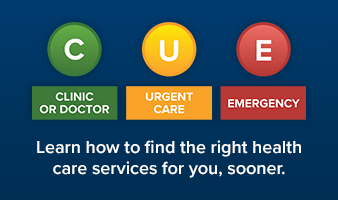Keep your baby happy and warm this winter
By Dr. Lynne Warda
Winnipeg Regional Health Authority
Published Wednesday, January 4, 2017
Parents like to keep their babies warm and cosy, but our cold Manitoba winters present a bit of a challenge in this regard.
For one thing, babies have less body mass than older children, and their internal thermostats are immature. As such, they get hotter or colder quicker. If a baby gets too hot or too cold, this can be unsafe.
Judging whether your baby is too hot or too cold can be tricky.
Cold hands and feet don’t necessarily mean your baby is cold. Instead, your baby may be cold if her upper arms, thighs or ears feel cold to the touch, or if she is fussing and you don’t know why. Your baby may be too hot if she is sweating, her stomach feels hot or she has a rash that looks like clusters of tiny pimples surrounded by pink skin.
The normal temperature for a baby is about 37 C. Use a thermometer to check your baby’s temperature.
Here are some tips to keep your baby warm this winter:
Preparing to go outside: Dress your baby in layers of clothing. Make sure they have warm socks, mitts and a hat that covers the ears. Wool and polar fleece protect against the cold and wick away sweat better than cotton clothing.
Don’t use scarves. They can catch on something and wrap too tightly around the neck. The same thing goes for mittens on strings. Neck warmers and mittens that have snaps, clips or Velcro attachments are safer.
Snowsuits or insulated bunting bags should be big enough for your baby to wiggle around in, but snug enough they don’t prevent a car-seat harness from fastening securely. You should be able to fit only two fingers between the straps and your baby’s collarbone.
When venturing outdoors, minimize your baby’s exposure, but ensure he can still breathe. If you are using a chest baby carrier, remember to keep your baby visible and “kissable.” This means you should keep your baby’s face in view at all times, with her chin up, back supported and body upright. Don’t put your baby underneath your coat.
Always make sure your baby is dressed well in case of an emergency. Imagine what would happen if your transportation broke down, and you had to wait for help to arrive.
Keeping warm indoors: Parents often take extra measures to ensure their baby is warm, even indoors. But it is important not to overdo it. Dress your baby the same way you dress yourself. An undershirt and a warm sleeper with feet are often enough to keep baby warm. Newborns may need to wear a hat.
Don’t use a hot-water bottle or electric blanket to keep your baby warm, and never put a full-size blanket on top of your baby while in a crib or bassinet.
Don’t place your baby’s crib near a radiator, heater or wood stove. Instead, place it in the warmest room, away from windows, outside walls and drafts.
Inside the car: Only use covers on your baby’s car seat briefly. Open the cover as soon as you’re in the car, to ensure your baby can breathe and doesn’t overheat. If you use a blanket, make sure it is no higher than armpit level.
Never place the blanket or car seat cover behind or under your baby.
Once inside the car, loosen or unzip your baby’s snowsuit so she won’t get too warm. Babies who sweat in their outdoor gear can get a chill. Once you are back indoors, remove outdoor clothing to prevent overheating. And never leave your baby alone in the car, not even for a minute.
Using a stroller: Keeping your baby warm in a stroller can be a challenge. You might be warm enough as you walk along, but your baby is lying inactive and is exposed to the cold. Here, the key is to dress your baby warmly, but don’t cover her face. You can cover the stroller with a blanket or clear cover, but check your baby often as you walk.
Dr. Lynne Warda is medical director of the Winnipeg Regional Health Authority’s injury-prevention program and an emergency physician at Children’s Hospital. This column was originally published in the Winnipeg Free Press on Nov. 29, 2013.

